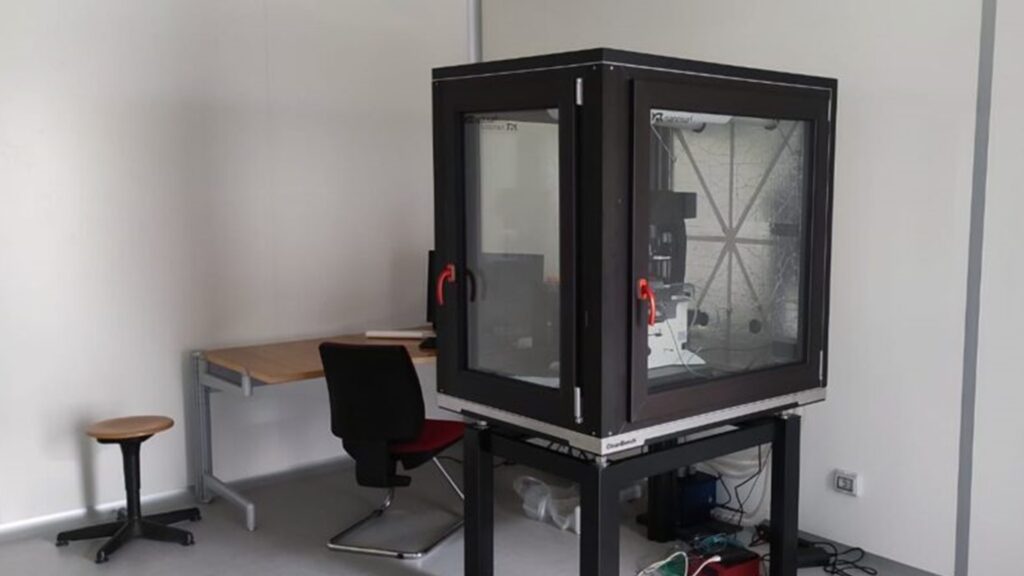AFM BIO
General Information
The instrument allows topological images of biological samples, e.g. tissues and cells. It can be used as a nano-manipulation instrument, allowing modifications of the morphology of a substrate. For biological systems, it also allows the nano-stimulation of the sample.

Tecnical description
The instrument allows to characterise of a maximum lateral dimension of 100 µm x 100 µm, a maximum height of 10 µm, and it is equipped with a cantilever holder for conductometry measurements. The optical microscope features magnification factors of 5x, 10x, 20x, 40x and maximum movements in the XY stage of 10 mm x 10 mm. Operational modes include non-contact mode, solid/liquid contact mode, solid/liquid tapping mode, solid/liquid with force spectroscopy; (Solid/Liquid) Nanolithography; Nano-Kelvin probe; and conductive-enhanced AFM.
Research areas and applications
Topographical analysis pf solid substrates and biological samples in liquid, nanolithography of rigid substrates, nanostimulation of cells.
Science highlights
Experimental team

- Eugenio Martinelli
- University of Rome Tor Vergata
- Professor
